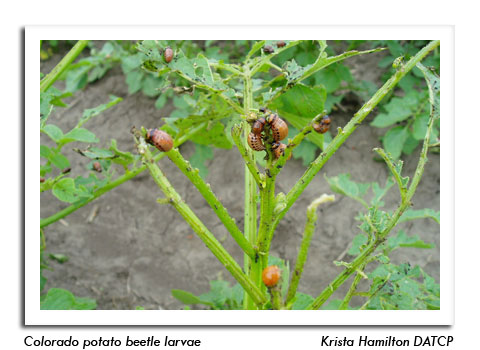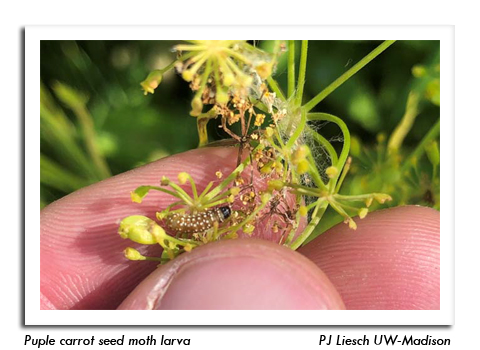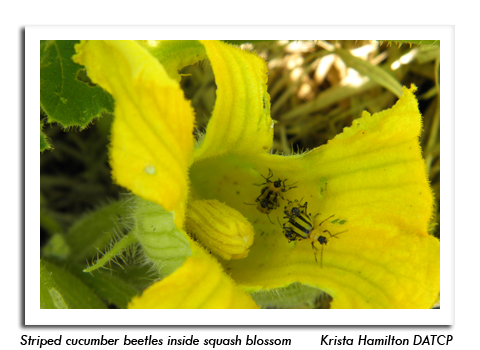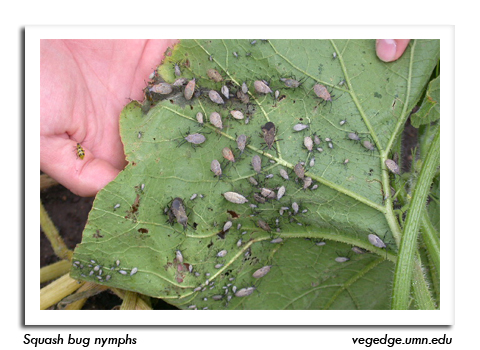
 |
|
|
Vegetables
Volume 64 Number 13 Date 07/25/2019 COLORADO POTATO BEETLE - Second-generation larvae are appearing on potatoes in the southern and west-central areas. Late-season control of this pest may be warranted if defoliation exceeds 30% during tuber formation. Treatments applied after egg hatch and before the majority of the larval population reaches the destructive fourth-instar stage are most effective. Potato growers who opt to chemically control the larvae should follow CPB resistance management guidelines by avoiding consecutive use of the same insecticide product or of products with similar modes of action. PURPLE CARROT-SEED MOTH - A report from UW Entomologist PJ Liesch notes that sightings of purple carrot seed moth (PSCM) larvae have increased the last two weeks. Confirmed for the first time in Wisconsin last year, this non-native European pest of carrots, dill, and related plants was initially found in Kewaunee County, with additional cases documented throughout the summer in Brown, Columbia, Dodge, Milwaukee, Racine, Sheboygan and Washington counties. New county-level detections in 2019 include Dane, Fond du Lac, Rock, Walworth, and Waukesha counties, bringing the total to 13 counties with verified reports. The greatest impact expected from this insect could be to plants in the carrot family specifically grown for seed, such as coriander, dill, and fennel. Feeding by the larvae can make the umbels unusable for cooking or for sale. STRIPED CUCUMBER BEETLE - Growers of cucurbits should continue to monitor plants for beetles and signs of bacterial wilt. Symptoms vary by host species, but typically the leaves turn dull green, followed by progressive wilting of the lateral leaves. As the pathogen moves through the main stem, it plugs the vascular tissue, eventually causes wilting and death of entire plants. A diagnostic technique referred to as the "string test" can be useful in confirming the disease. The test involves cutting a wilting stem, pushing the two cut ends together, then slowly pulling the ends apart. If bacterial wilt is present, a string of bacterial ooze should appear between the cut ends. SQUASH BUG - Economic counts of 1-2 egg clusters per plant were found on squash in two La Crosse County vegetable gardens surveyed this week, along with adults and many nymphs. Handpicking the eggs and all squash bug stages from the undersides of leaves is suggested if only a few plants are infested, or dusting diatomaceous earth over plants may help reduce numbers. Levels that become intolerable can be spot treated with an organic insecticide or a pyrethroid, but insecticides are generally only effective against the small, newly-hatched nymphs, and thorough coverage is critical. The economic threshold for this pest in one egg cluster per plant when vines are flowering. CORN EARWORM - Migrants continued to arrive in the state for the second week. Pheromone traps captured 22 moths from July 11-17 and another 79 moths from July 18-25. Although the total monthly count of 144 moths at 9 of 16 pheromone trap locations signals a relatively low risk of earworm problems as of late July, scouting of silking cornfields should be increased going into August. Trapping network participants are reminded to replace lures on a weekly basis. -- Krista Hamilton, DATCP Entomologist 





|
|
|